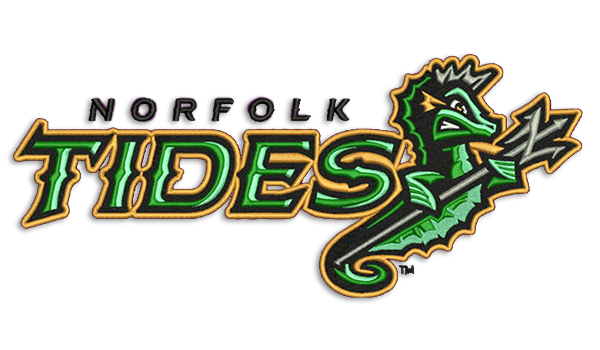Reputable Digitizing for Embroidery: Relied On by Specialists
Reputable Digitizing for Embroidery: Relied On by Specialists
Blog Article
Streamlining the Art of Embroidery Digitizing: Step-by-Step Overview
As technology proceeds to breakthrough, the digitization procedure has actually become much more available, enabling fanatics to bring their detailed styles to life with convenience. In this guide, we will certainly untangle the complexities of needlework digitizing, breaking down each step systematically to improve the procedure and equip both novices and skilled embroiderers alike.
Understanding Needlework Digitizing Software Application
Embroidery digitizing software program acts as a vital tool for changing complex layouts into electronic styles suitable with embroidery machines, assisting in accurate stitching and modification. This customized software application enables individuals to import different photo documents formats, such as JPG or PNG, and transform them into embroidery machine-readable layouts like DST, EXP, or PES - Digitizing for Embroidery. By using attributes like stitch editing, underlay choices, and thread color choice, digitizing software program enables customers to control every facet of the style procedure
Moreover, advanced embroidery digitizing software application uses devices for producing intricate styles, changing stitch density, and including elaborate information. Customers can additionally sneak peek the style before sewing it out, making sure precision and minimizing mistakes. In addition, lots of software program programs offer automatic attributes that aid enhance the digitizing process, conserving time and initiative.
Comprehending the abilities of needlework digitizing software is necessary for achieving high-quality outcomes in needlework tasks. By mastering this tool, needlework enthusiasts and experts can unleash their imagination and bring complex styles to life with precision and effectiveness.

Selecting the Right Layout Data
After acquainting yourself with the capacities of embroidery digitizing software, the following critical action in the process is selecting the best design declare your project. Digitizing for Embroidery. When choosing a layout apply for needlework digitizing, it's important to think about the complexity of the design, the dimension of the final item, and the sort of textile you will be dealing with
For detailed layouts with great details, a high-resolution picture or vector data is recommended to make certain that the needlework equipment can accurately recreate the layout. In addition, the size of the end product plays a substantial role in choosing the right style data. Bigger layouts may call for greater resolution documents to maintain quality and intensity.
Moreover, the kind of textile you will certainly be stitching on affects the selection of layout documents. Different textiles might need adjustments in the layout data to ensure that the stitches are properly lined up and the design looks like meant. By thoroughly picking the right layout data based upon these variables, you can establish on your own up for a successful embroidery digitizing procedure.
Digitizing Tools and Strategies
Utilizing specialized software application and accuracy techniques, digitizing tools are important in transforming intricate designs into embroidery-ready files. Embroidery digitizing software application, such as Wilcom, Hatch, or Embrilliance, provides the required platform to transform artwork into stitch data. These programs provide functions like stitch modifying, underlay options, and text devices to ensure the style equates seamlessly onto textile.
Among the essential techniques in digitizing is developing a clear path for the embroidery machine to comply with. This involves digitizing each aspect of the layout with precision, determining stitch types, densities, and instructions. By making use of tools like digitizing tablets or software-specific plugins, embroiderers can accomplish a high degree of precision in their digitized styles.
In addition, grasping the art of padding sewing is critical for producing top quality embroidery. Underlay stitching supports the material and creates a structure for the style, guaranteeing that the last product is both visually attractive and durable. By comprehending these digitizing devices and strategies, embroiderers can elevate their craft and bring intricate styles to life with accuracy and effectiveness.
Tailoring Stitch Kinds and Instructions
Having established a foundation in digitizing devices and strategies, a critical facet beforehand needlework workmanship hinges on personalizing stitch kinds additional resources and directions with precision and objective. The selection of stitch kinds can significantly affect the overall look and structure of the embroidered style. Satin stitches, recognized for their smooth and shiny coating, job well for creating boundaries and text. On the other hand, fill stitches are excellent for covering larger areas efficiently. By strategically integrating these stitch kinds, embroiderers can accomplish deepness and dimension in their styles.
Additionally, the instructions of stitches plays a critical function in enhancing the aesthetic charm of the final embroidery. Diverse stitch instructions can add texture, emphasize particular components, and develop aesthetic rate of interest. For example, changing the angle of stitches can mimic activity or all-natural patterns like fur or plumes. By trying out various stitch angles and patterns, embroiderers can bring their styles to life with exceptional information and complexity. Grasping the art of tailoring stitch kinds and instructions equips embroiderers to release their creativity and boost the top quality of their work.
Testing and Refining Your Digitized Style
To make sure the accuracy and top quality of your digitized style, comprehensive testing and refinement are crucial action in the embroidery digitizing procedure. As soon as you have finished the digitization of your style, it is critical to examine it before proceeding with the actual needlework. Examining allows you to identify any kind of prospective concerns such as string breaks, stitch density problems, or style distortions that may affect the outcome.

After screening, it is essential to fine-tune your digitized style based upon the responses from the test sew-out. This might include tweaking stitch settings, changing densities, or making changes to the overall layout Continued to attain the desired outcome. about his By repeating with screening and refinement, you can fine-tune your digitized layout to perfection prior to progressing with the actual needlework process.
Verdict
In verdict, mastering the art of embroidery digitizing calls for a detailed understanding of the software program, selecting the appropriate layout data, using digitizing tools and strategies, customizing stitch types and instructions, and screening and improving the digitized layout. By adhering to these actions, embroiderers can simplify the digitizing procedure and create premium embroidered designs with precision and effectiveness.
Report this page